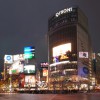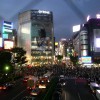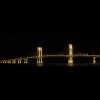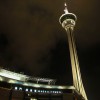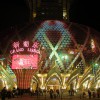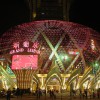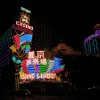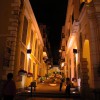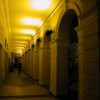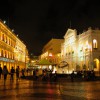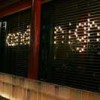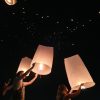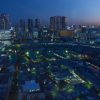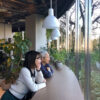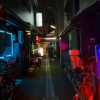Date of Issue:September 13, 2018
・Activity 1 / Night Watching Tour in Achi Village (2018/07/21-07/22)
・Activity 2 / Lighting Detectives Jr. Summer Workshop (2018/07/26)
Night Watching Tour in Achi Village
2018/07/21-07/22 Yumi Honda + Simeng Huang + Noriko Higashi
This tour was planned to make up for last year’s U-turn over Hachijo-jima. We took a chartered bus from Tokyo to Achi Village in Nagano Prefecture, which has been selected as the village with the most beautiful starry skies in Japan. A total of 15 participants enjoyed the summer stars and sun.
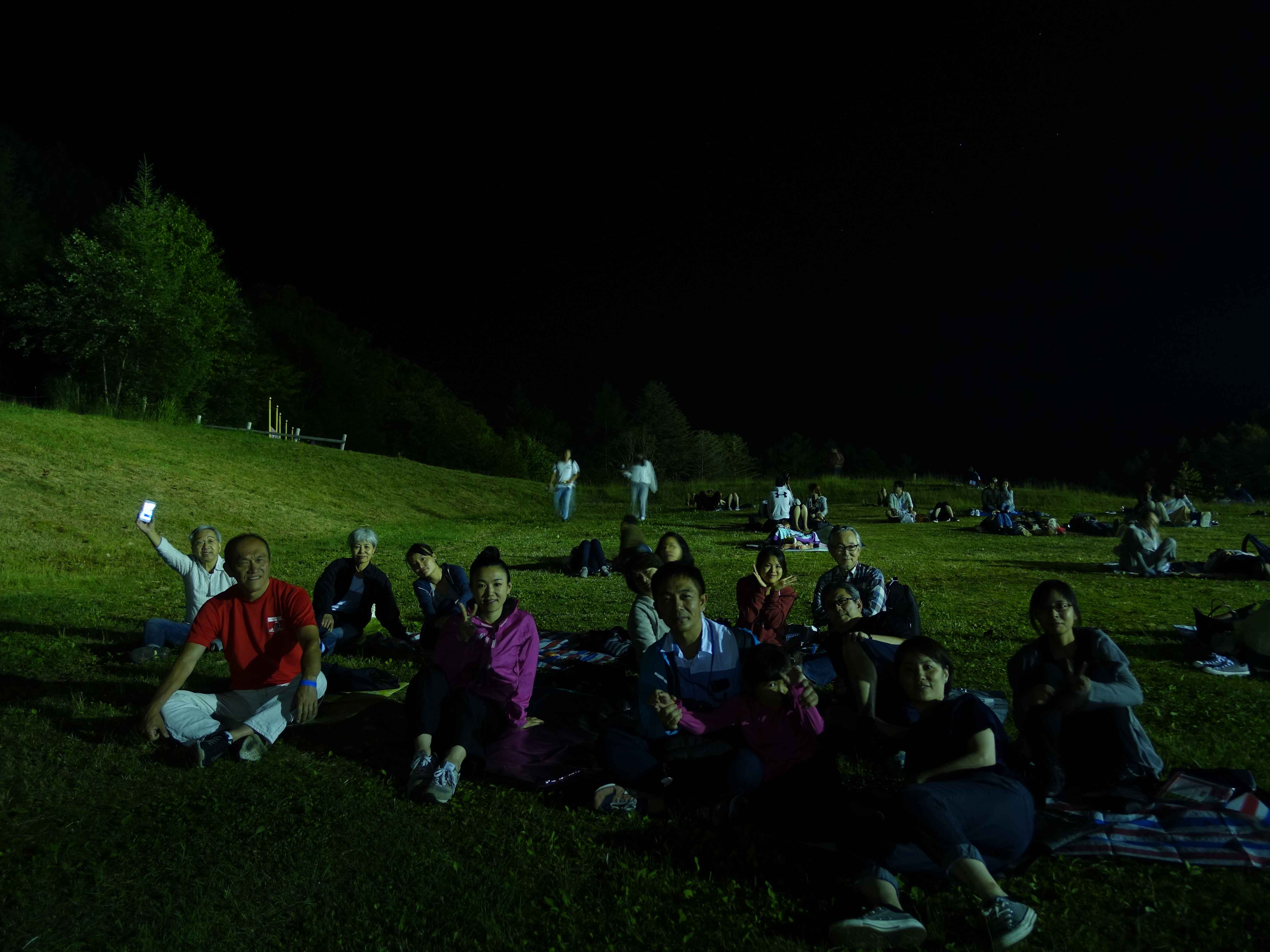
Waiting to see the stars at Heaven’s Sonohara
■The Starry Sky as a Tourist Resource
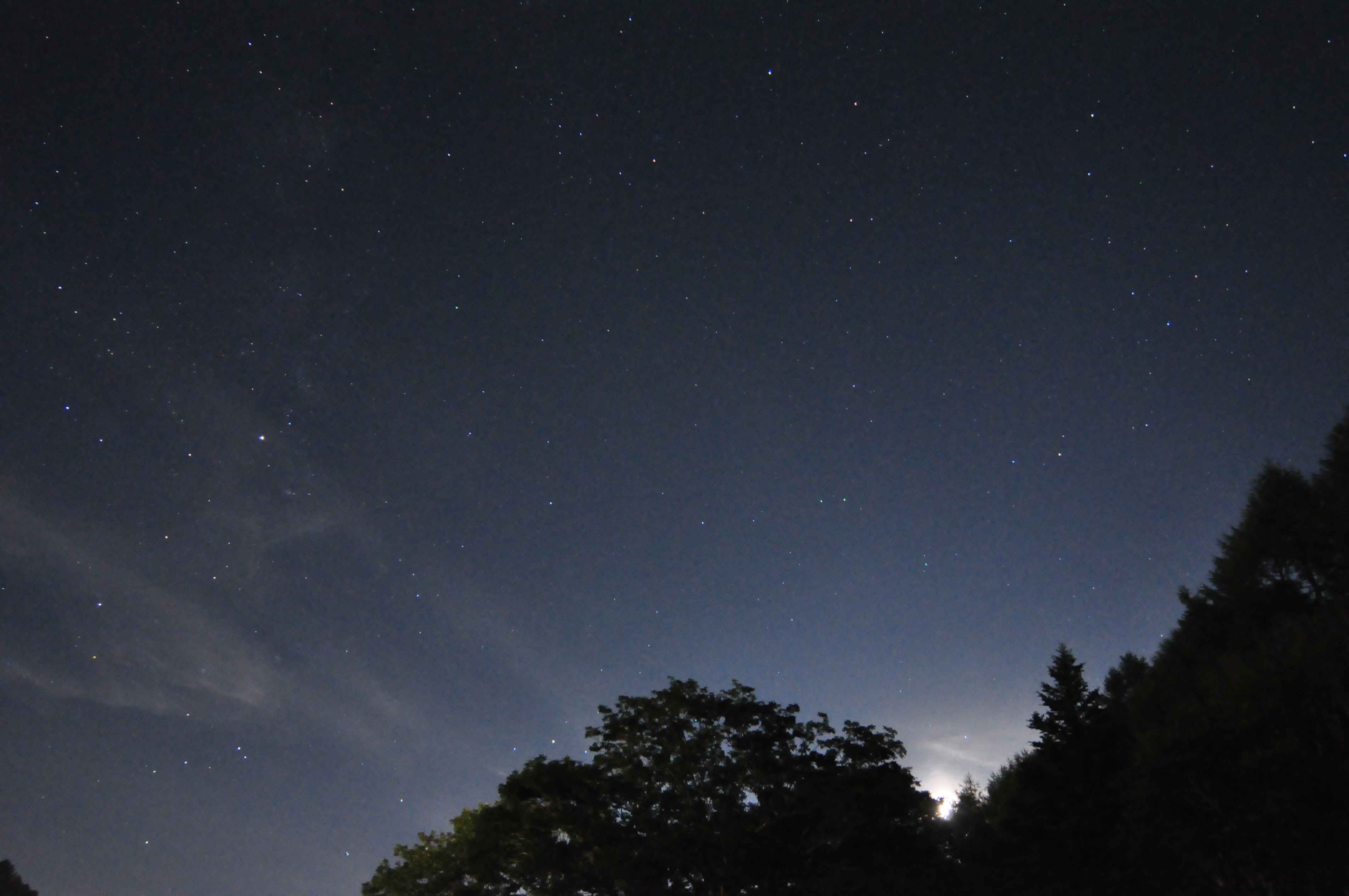
Even on a bright night with strong moonlight, the number of stars was completely different from what you would see in a city
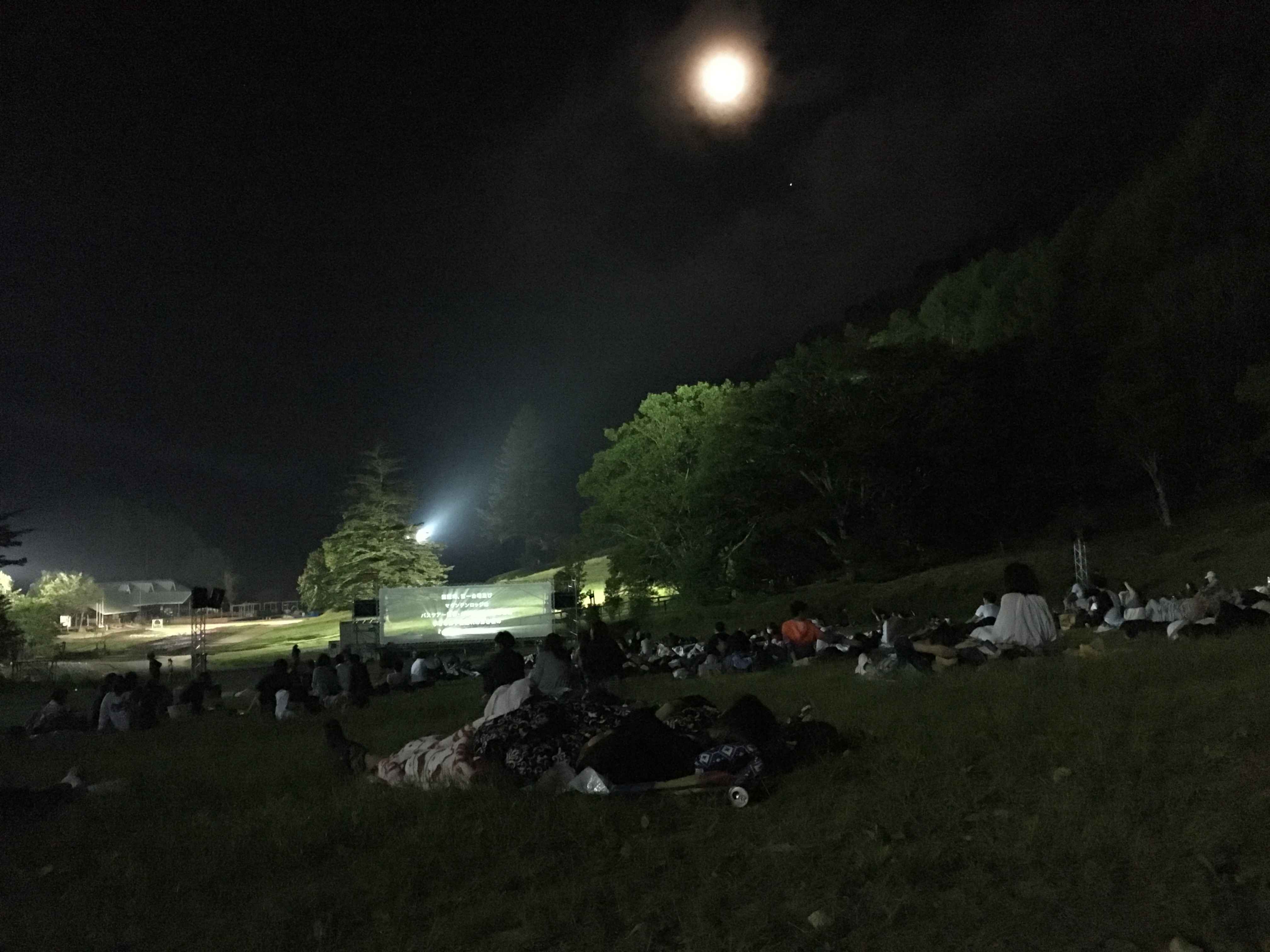
People lying down on the mountaintop, waiting
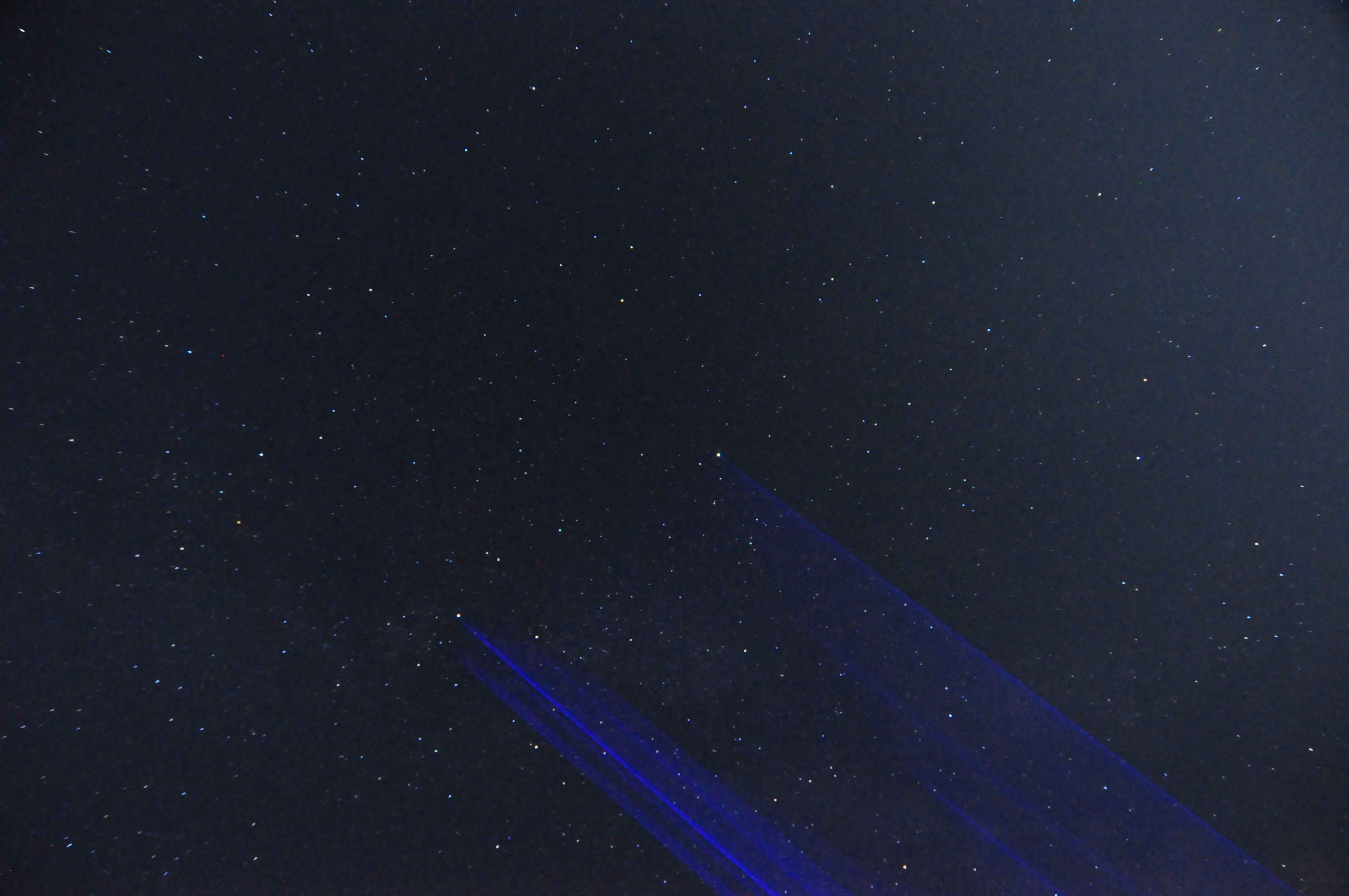
A guided commentary on the stars using a laser pointer
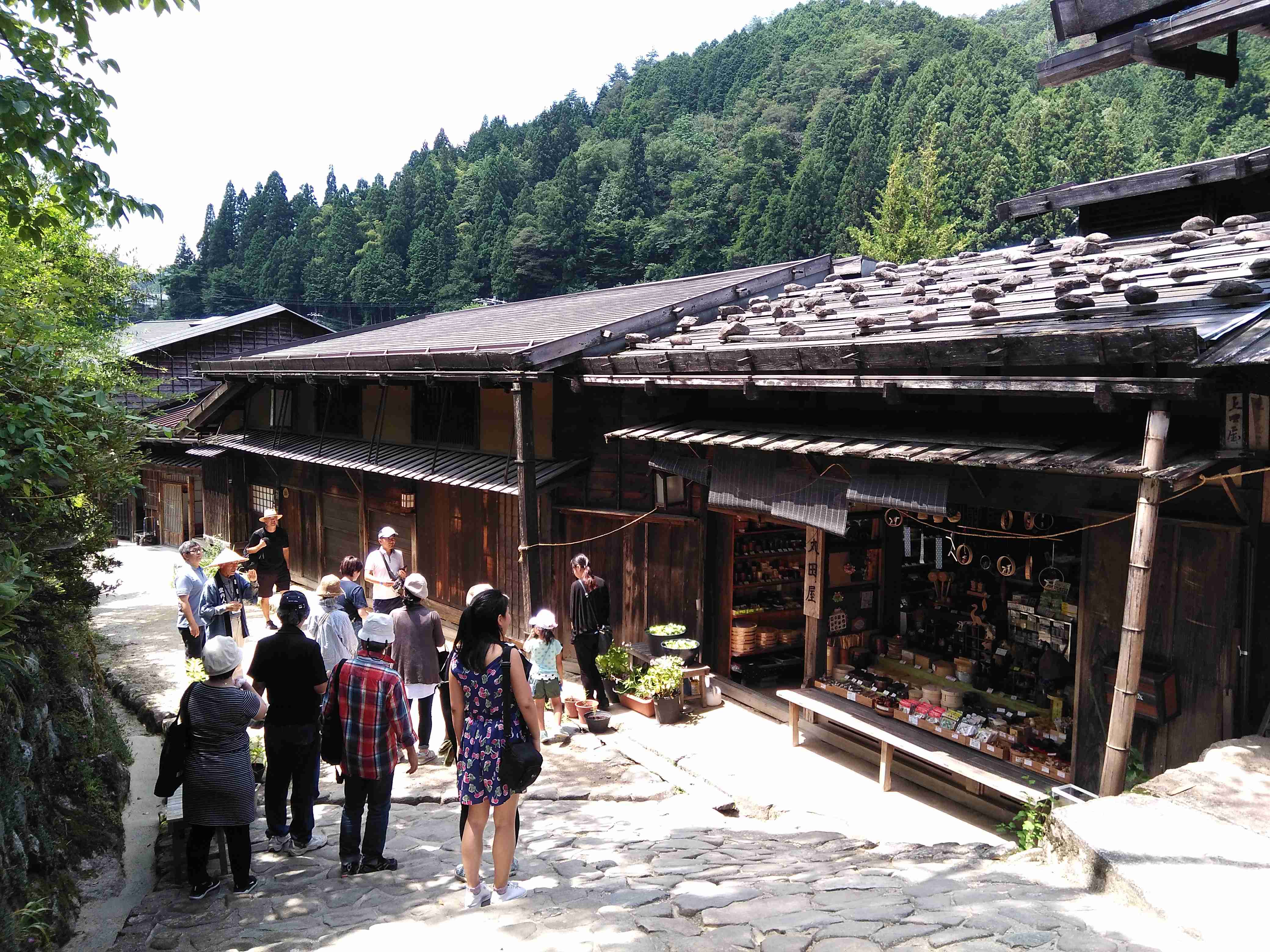
Tsumago-juku, the 42nd post town on the Nakasendo trail. A sight unique to the mountains: a roof thatched with wood and held down with stones
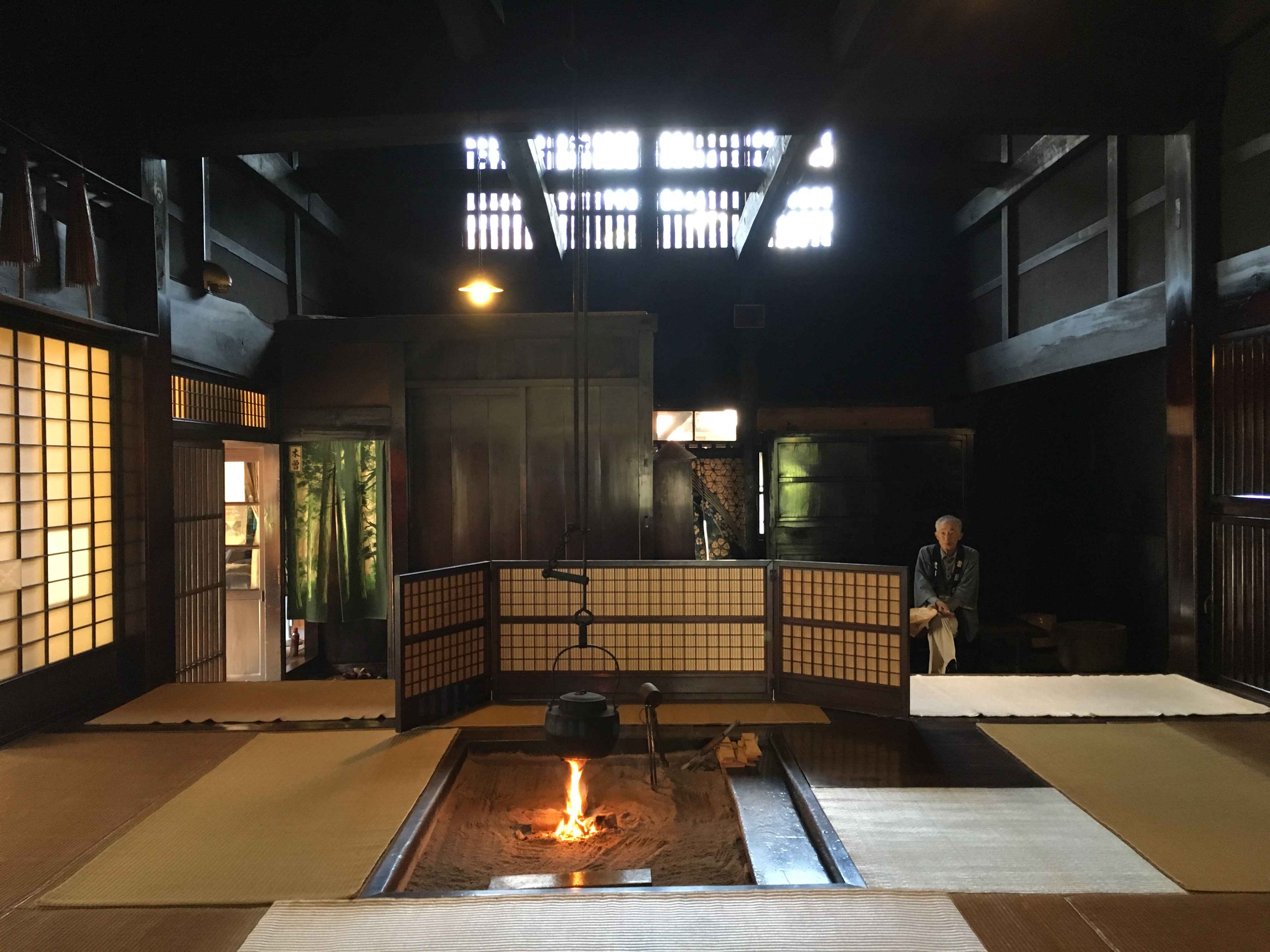
The waki-honjin’s irori-bata and high windows. The seat for the head of the household is in the
foreground
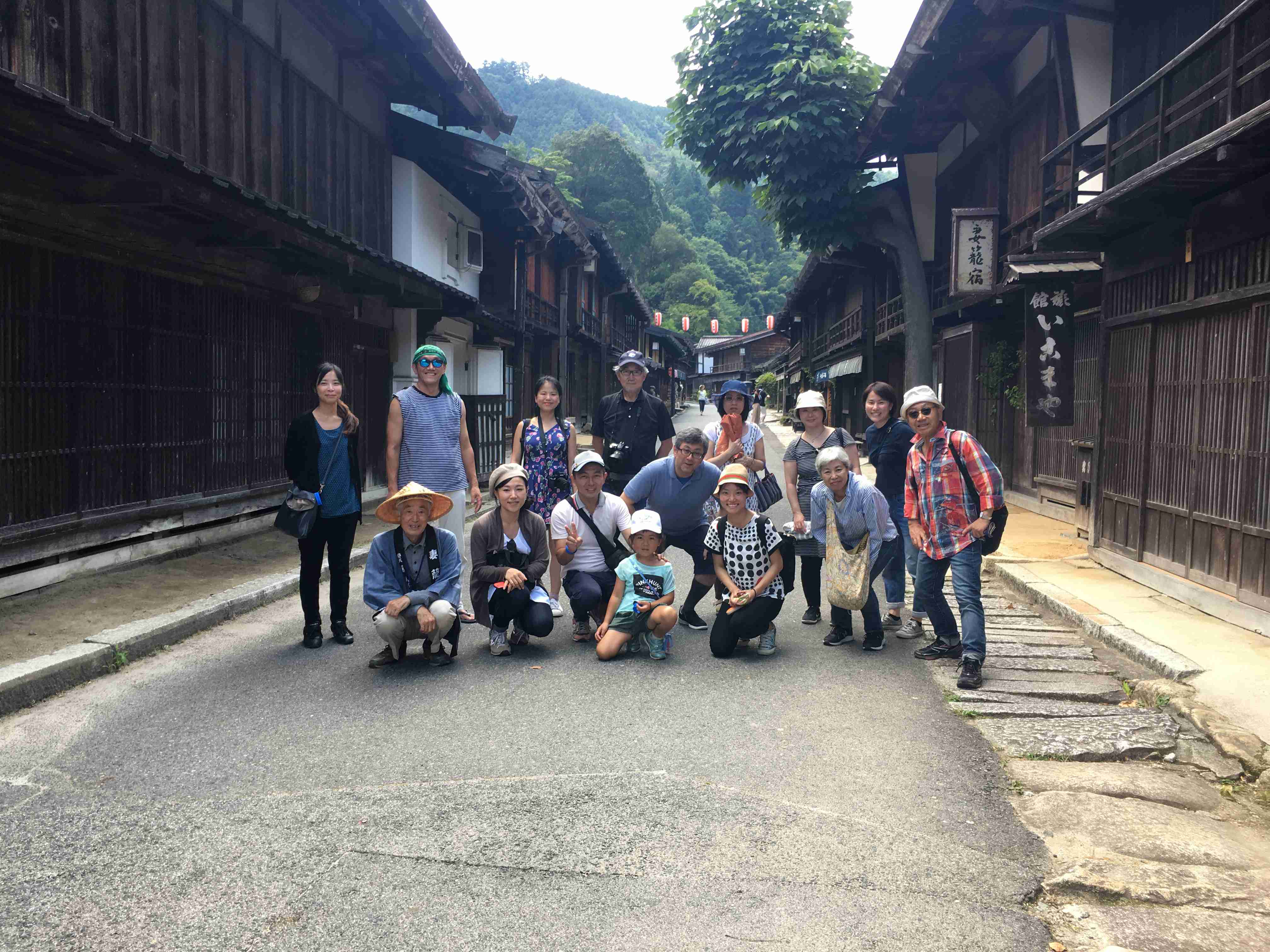
A nostalgic streetscape
This “Achi Village Starry Sky Tour” was devised as a way to attract tourists back to Hirugami Onsen—which had been popular until the time of the Aichi Expo—by using the ski resort during the summer. While reading an interesting article on the bus, we, the Lighting Detectives members, learned that the event, which was started by villagers about five years ago, has now become a year-round attraction. With that in mind, we headed from Tokyo to the western part of Nagano Prefecture.
During the day, we went rafting on the Tenryu River, enjoyed a hot spring and dinner, and after a few drinks, we set off for the main event: stargazing. The venue was the “Heaven’s Sonohara” ski slope, which is surrounded by mountains. We boarded a gondola from a station with blue lighting that gave it a space-station feel. The gondola’s lights were turned off, and we traveled 2.5 km up to the mountaintop in pitch-black forest for about 15 minutes. Since we were farther from town than we expected, the city lights gradually faded away.
When we arrived at the mountaintop, many people had already found a spot on the grass. The Lighting Detectives members also lay down on the gentle slope and got ready, waiting for the lights to go out. At 10:15 p.m., an announcement by the staff prompted everyone to close their eyes and count down together. (The floodlights were turned off.) When we opened our eyes, a sky full of tiny stars spread out before us, and gasps of awe arose from everywhere. The starlight overlapped with a sense of depth, and combined with the moonlight, the entire night sky appeared faintly bright. It was a bright moonlit night, just past the first quarter, and although there was occasional night fog, the sight of the small stars spreading overhead was mesmerizing. What seemed to be a white band of fog or thin clouds was the Milky Way. Among the many visible stars, the brightest ones belonged to famous constellations. We were also able to see the summer constellations, including Cygnus. Because the sky itself was bright, the light from the stars and moon was sufficient for walking without any inconvenience. However, the illuminance meter reading was 0.02lx, which is significantly lower than the 0.2lx of a full moon.
We were introduced to constellations like the Summer Triangle using a laser pointer. We spent a fleeting 15 minutes gazing at the starry sky while listening to music. We wanted to keep looking, but the floodlights were turned back on and the event came to a close. We descended after 11 p.m., a time which could be considered a late-night tour, yet over 1,500 people of all ages had gathered in search of the starry sky.
The Meiji Restoration was only 150 years ago, and thinking that before then, a starry sky like this would have been a normal sight even in a bustling town, I couldn’t help but feel a bit envious. While there are many nightscape spots in various locations, I believe it would be difficult to create new starry sky viewing spots. To prevent such places from disappearing, I want to be more mindful of how I use light.
■Old-World Streets and Light
The next day, we took a walk through Tsumago-juku, a post town on the Nakasendo trail. We were given a detailed tour by a humorous guide who taught us about the history of the houses and the features of the buildings. Tsumago-juku is the first district in Japan to be designated a “Preservation District for Groups of Important Traditional Buildings.” Although the houses look similar at first glance, there were many interesting details, such as differences in floor height and front gardens depending on the era they were built, and roads that were unnaturally curved to defend against enemies.
The rustic streets in the mountains suited the clear summer sky. Despite looking like a peaceful town, there were many rules and customs for the lord of the domain, which spoke to the strict class hierarchy of the time. Inside the waki-honjin (secondary lodging for a lord), which we toured, we saw firsthand the strictness of the household traditions. The seating position at the irori-bata (hearthside) was determined by the family’s hierarchy, such as parent and child, male and female, and mother-in-law and daughter-in-law.
We were also very impressed by how the daylight was brought into the traditional Japanese house. From autumn to winter, the light was said to pour in like a shower from the high windows in front of the parlor, reaching the hearth only on the winter solstice. We were shown photos, and the light beams were clearly visible through the smoke from the hearth, which looked very mystical.
Finally, in Akasawa Natural Recreation Forest, we took a trolley train through a natural forest of Kiso hinoki (Japanese cypress) and enjoyed a walk through the forest with beautiful sunlight filtering through the leaves and the scent of cypress in the air.
Three years ago, we experienced the power of fire and the enthusiasm of the people at a fire festival. This time, our tour was more focused on nature and stimulated our five senses with river rafting, stargazing, a history tour, and a forest walk. We hope to be able to go on another tour with the members in search of various kinds of light. You can also see the starry sky photos on our Instagram, as they were difficult to see in the online feed. Please be sure to check them out. (Yumi Honda, Simeng Huang, Noriko Higashi)
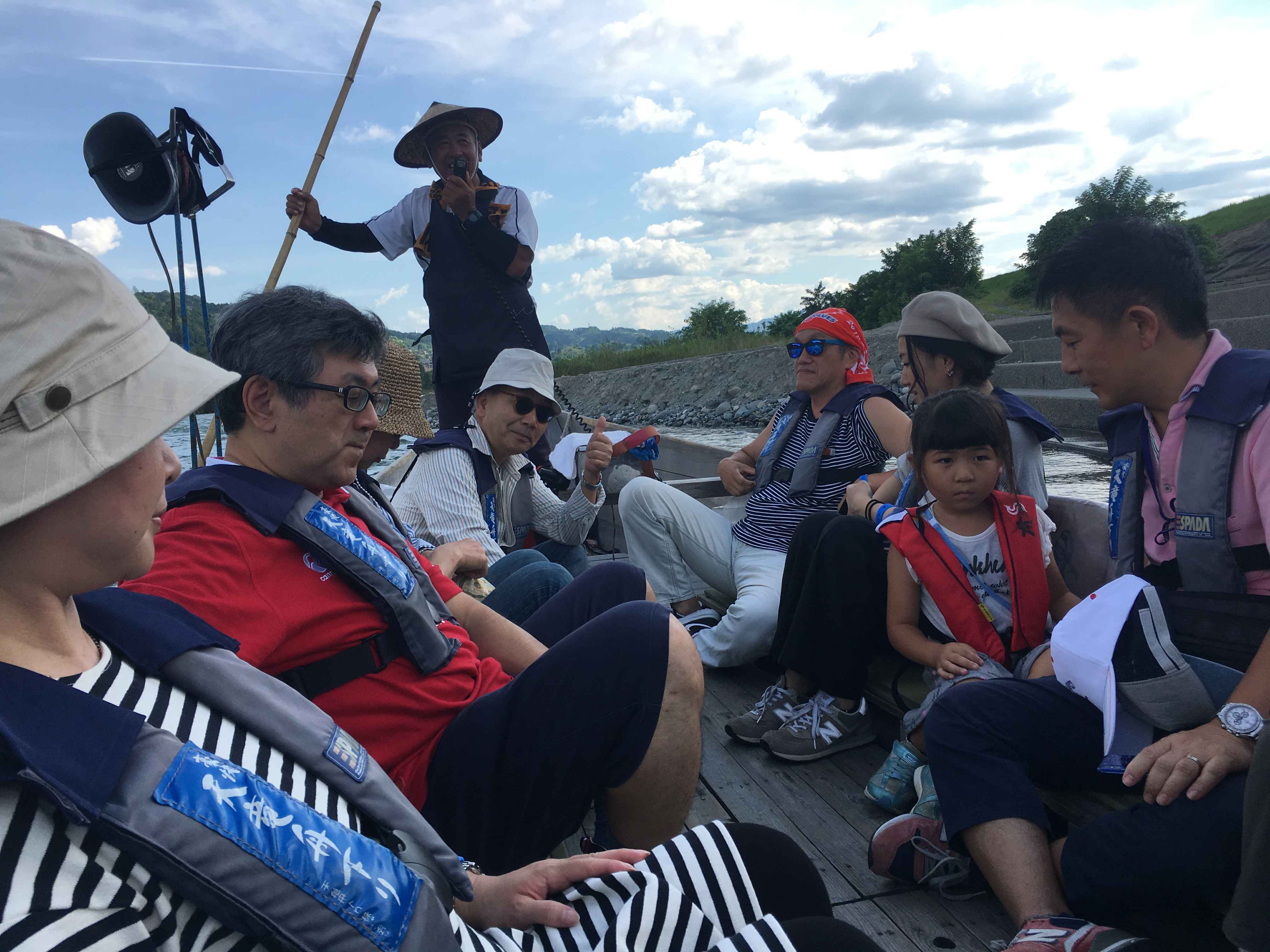
Rafting on the Tenryu River. Although the sun was strong, the air was cool and refreshing near the water
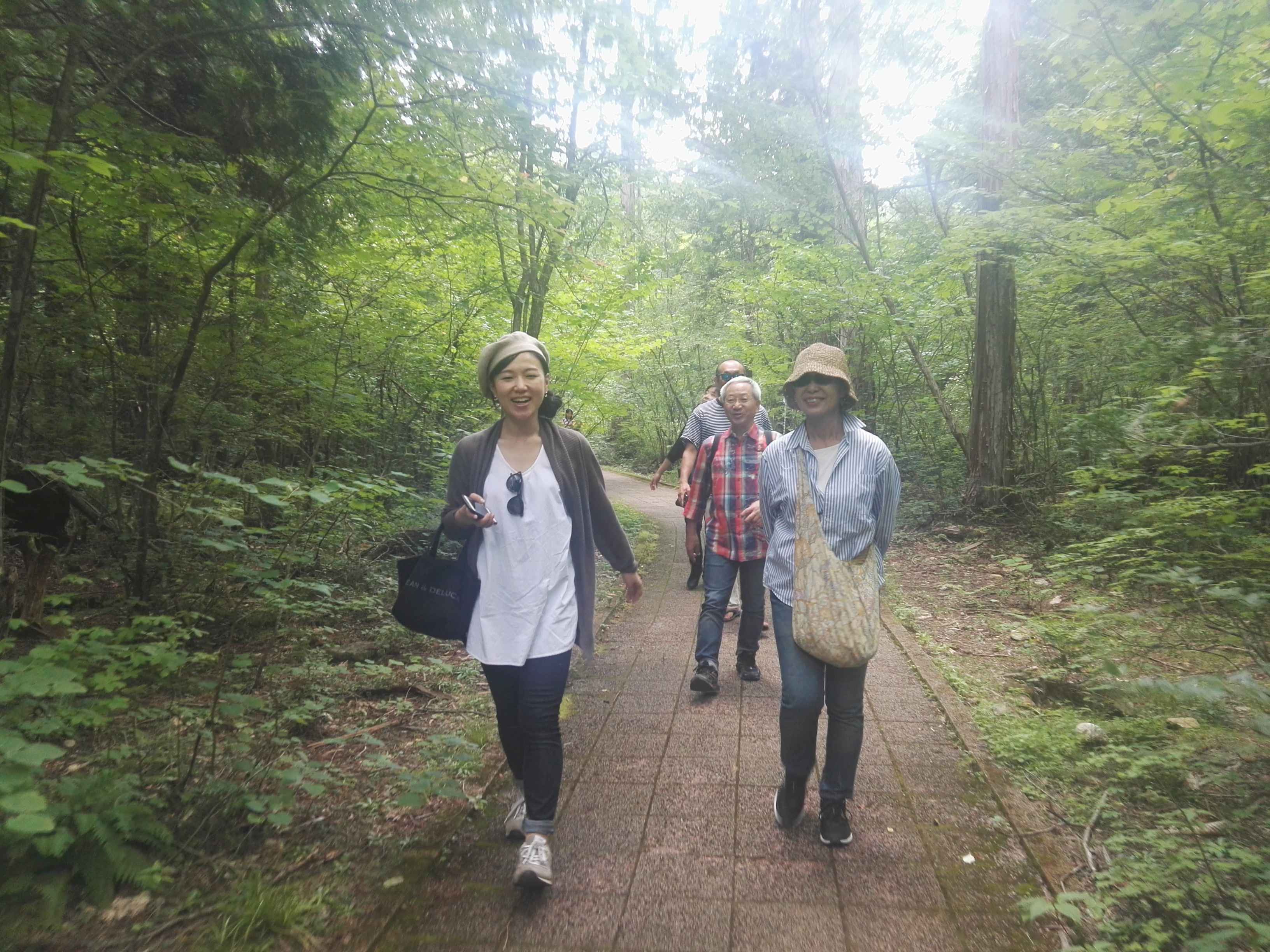
Forest bathing in the Akasawa Recreation Forest, where you can feel the negative ions!
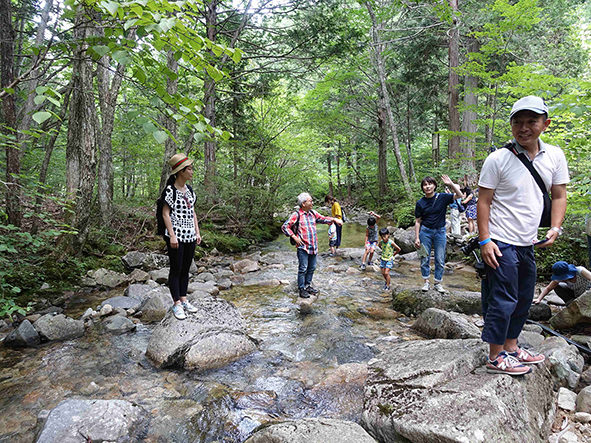
The Lighting Detectives members, feeling like children again
Lighting Detectives Jr. Summer Workshop
Go Out into the Night City and Search for Lighting Heroes and Villains!
2018/07/26 Noriko Higashi + Leon Hitsu + Hikaru Kimura + Yuri Araki + Shosaku Takahashi + Aiko
Kanda
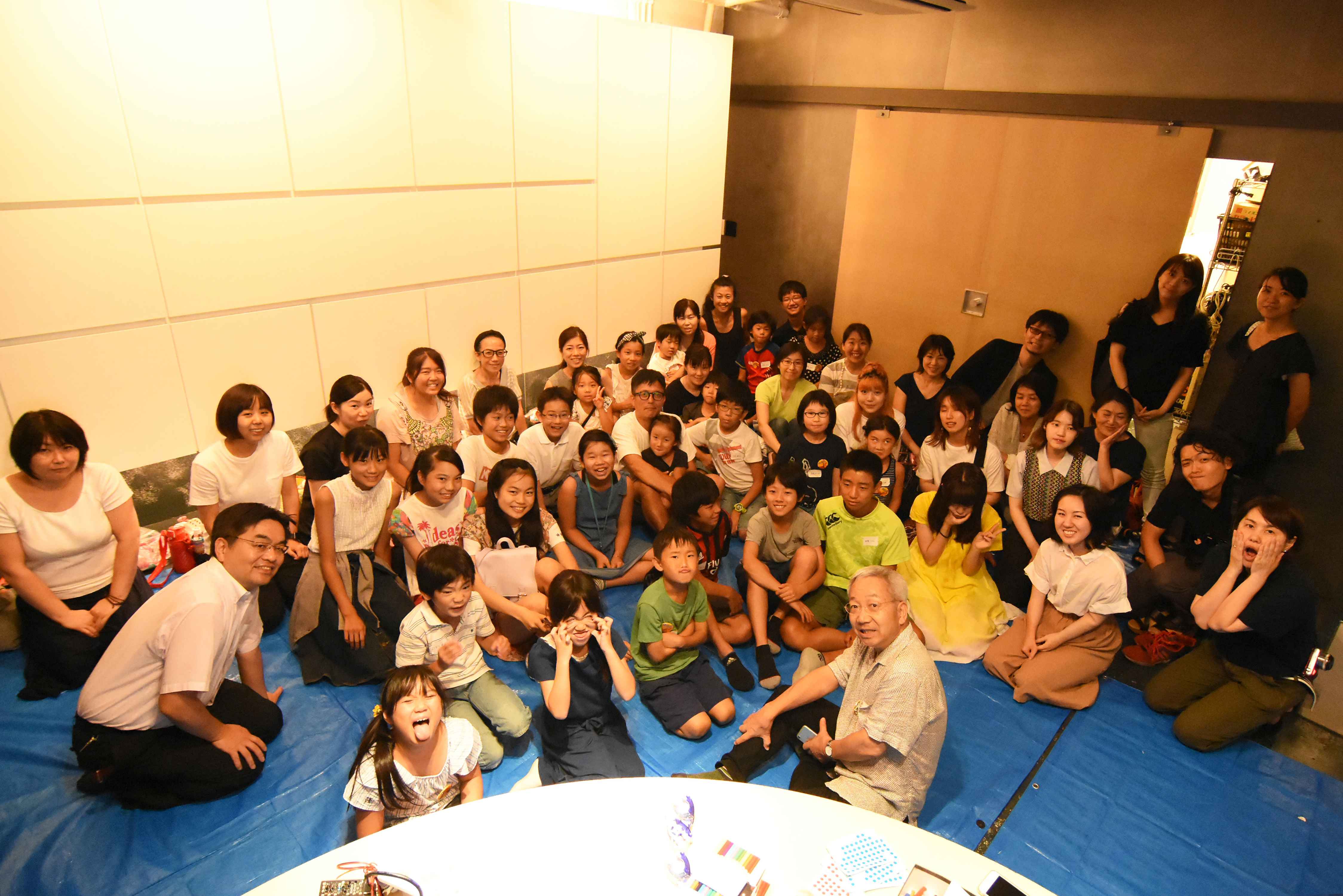
It was a lively workshop with a total of 49 participants
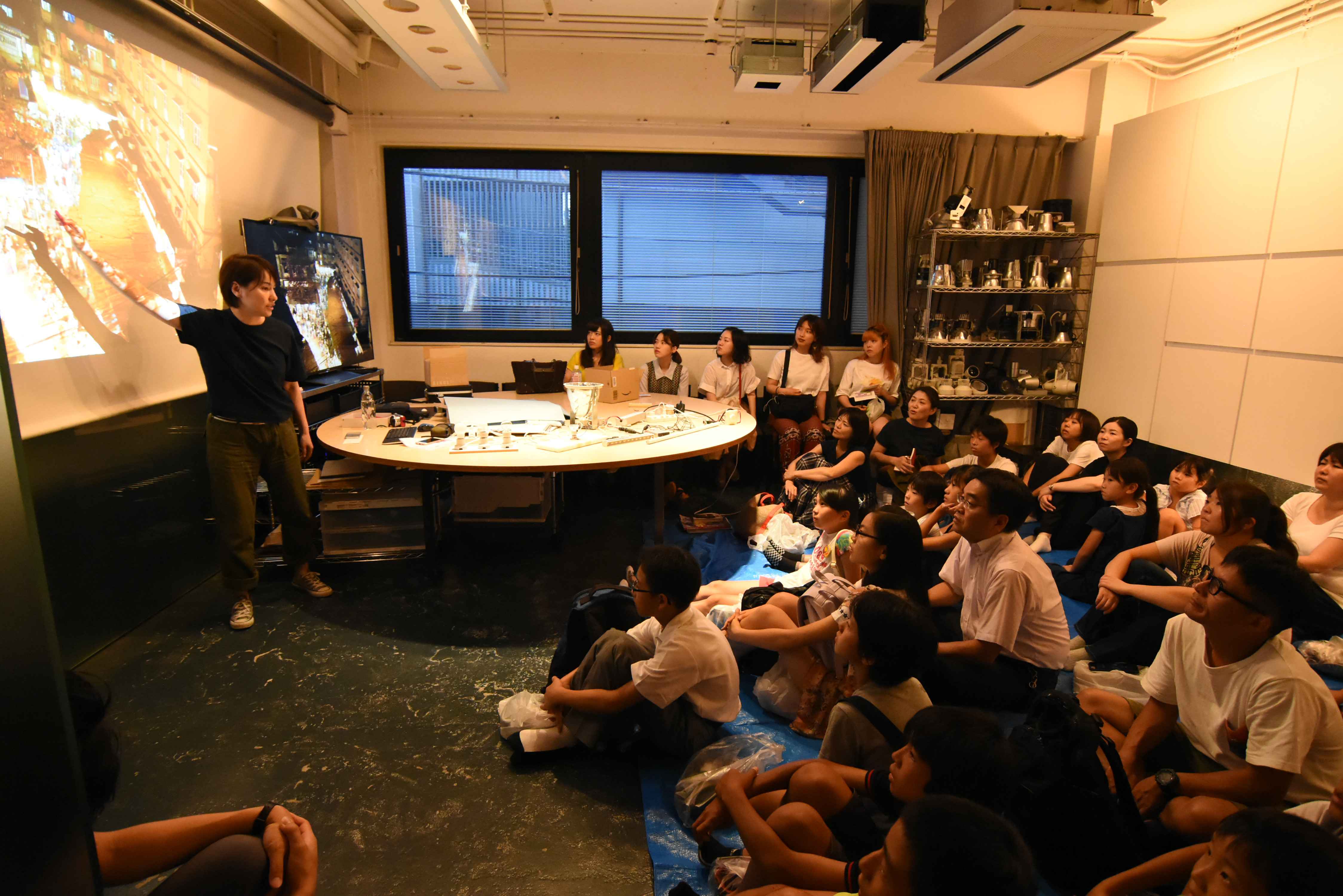
A Look at the Orientation
We recently held a Lighting Detectives Jr. workshop for the first time in a while in Tokyo’s record-breaking summer heat. 24 energetic children and their guardians searched for lighting heroes and villains around Omotesando and Cat Street.
The LPA conference room was filled with children in late July, just as summer vacation began. The Night Walk Survey workshop was held for the first time in three years, and 24 children, ranging from first graders to ninth graders, gathered, even though the capacity was only 15.
The staff discussed how to get children, who don’t usually think about lighting, interested and what lessons they should take away. The workshop targeted the following goals:
1. Learn about light
2. Observe the town’s lights
3. Search for lighting heroes and villains
4. Consider why something is a hero OR a villain
5. Exchange opinions on what others thought
6. Think about how to improve a villain
■Orientation
First, chief Mende explained the basics of lighting. He offered a simple breakdown of the history of lighting, starting with fire, the impact of different color temperatures on people, and the differences in lighting placement between homes in Japan and abroad. Following that, he introduced the participants to the elements that make up a city’s lighting and explained what constitutes a lighting hero and villain before the group set off for the walk.
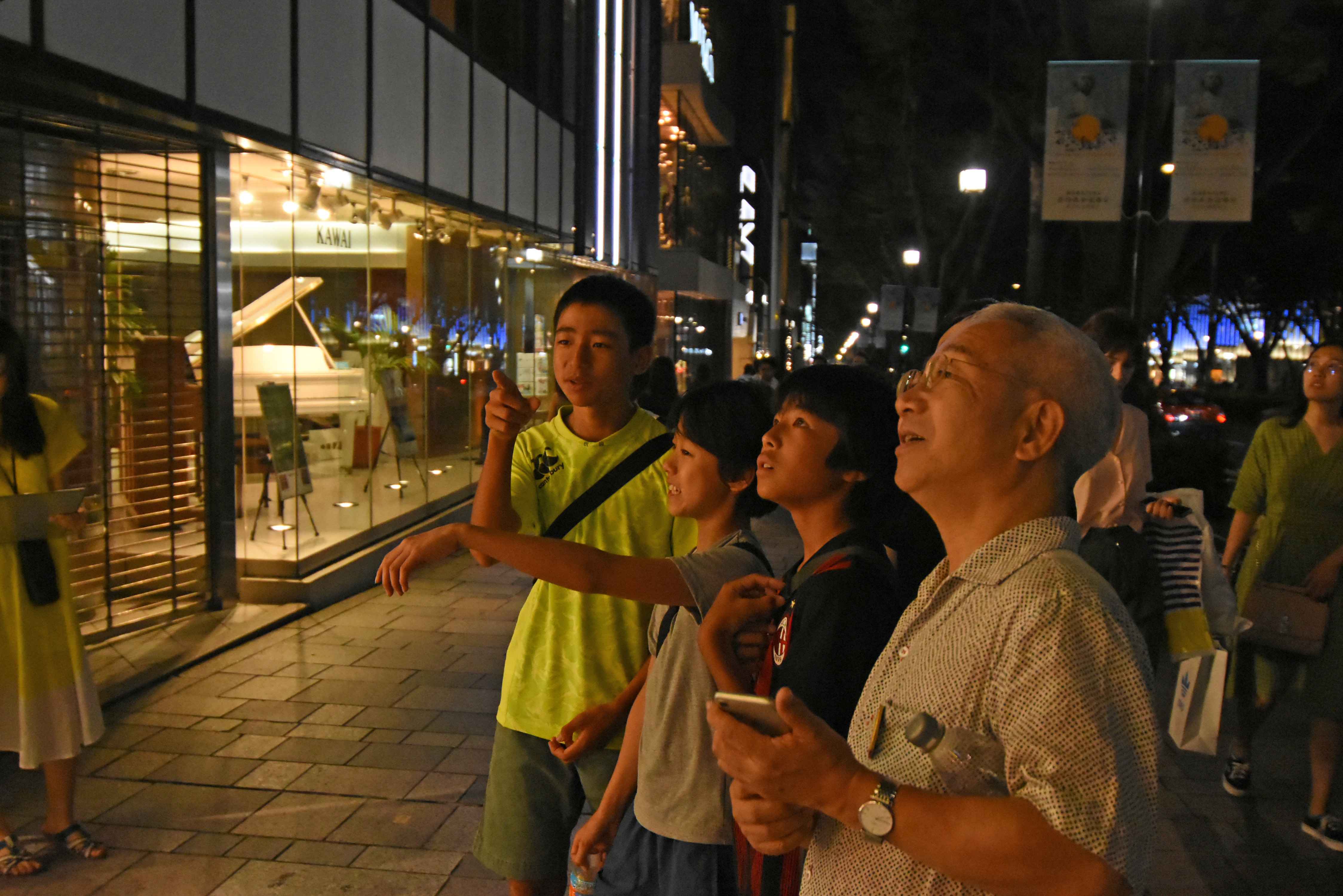
Children sharing their opinions during the Night Walk Survey
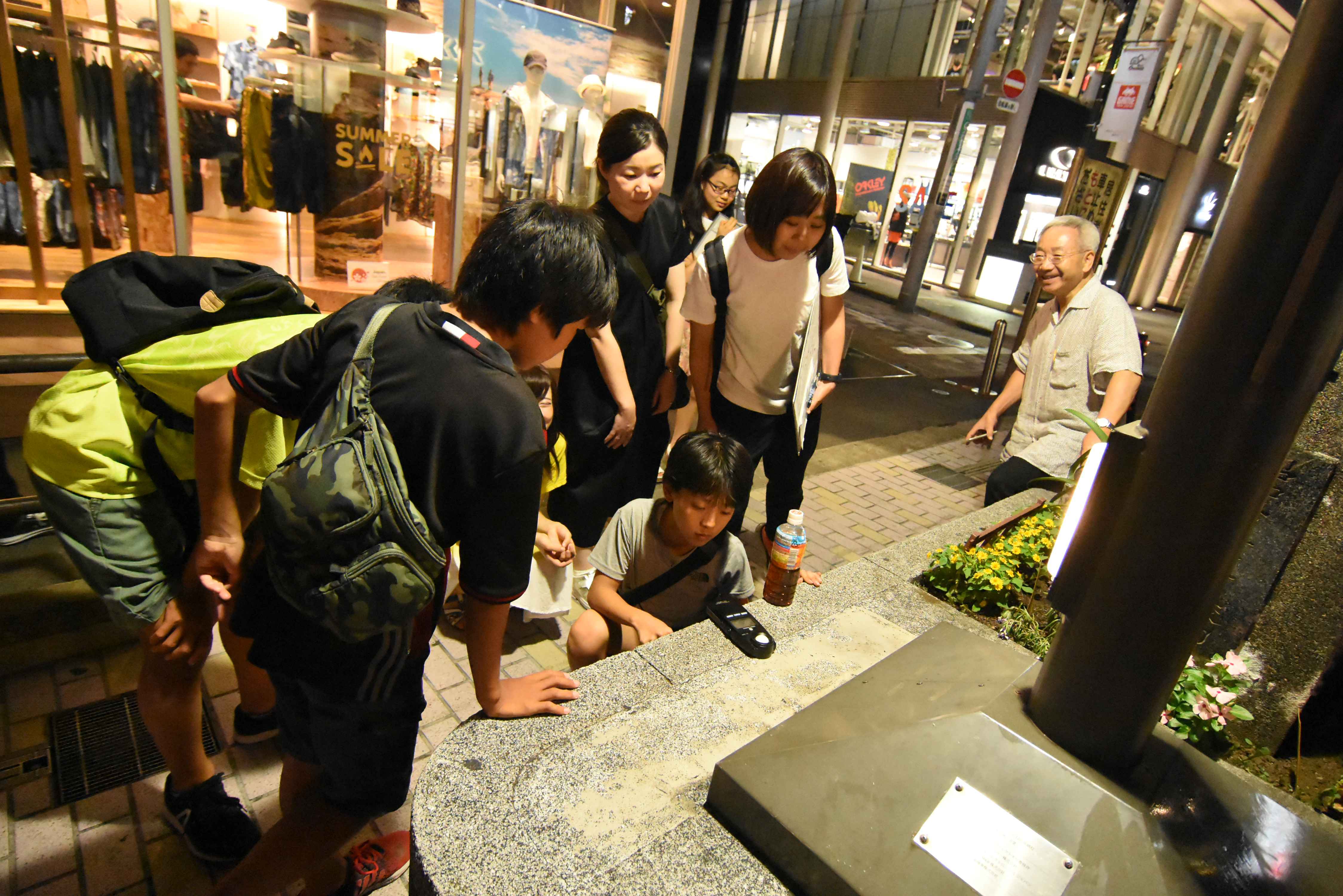
Measurement of the illuminance along the roadside
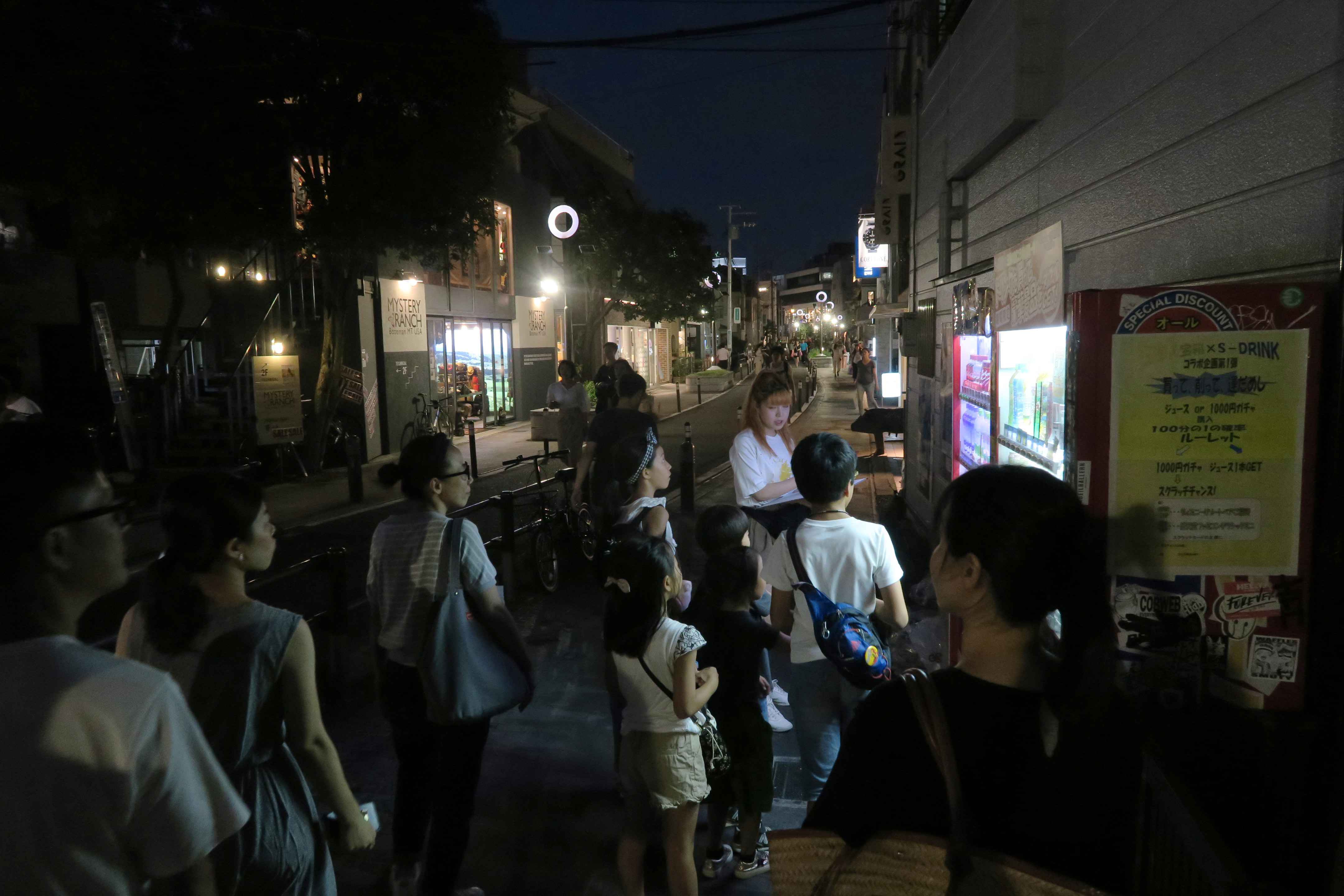
We discovered that even two side-by-side vending machines have a different sales appeal when the lighting is different
■Night Walk
The children were divided into five teams, and each team started searching for heroes and villains.
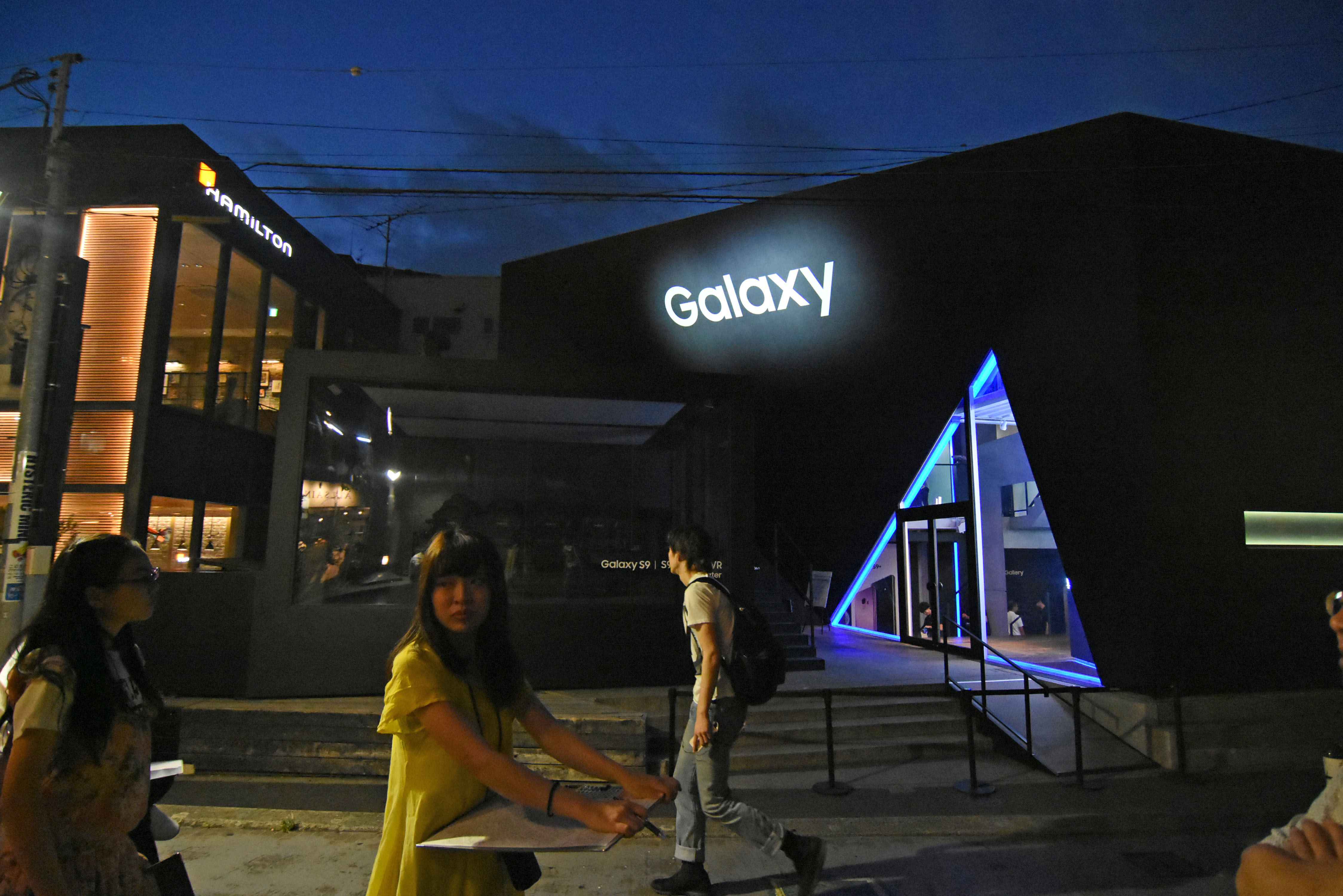
The lighting that makes the sign stand out, which was cited as a hero by many teams
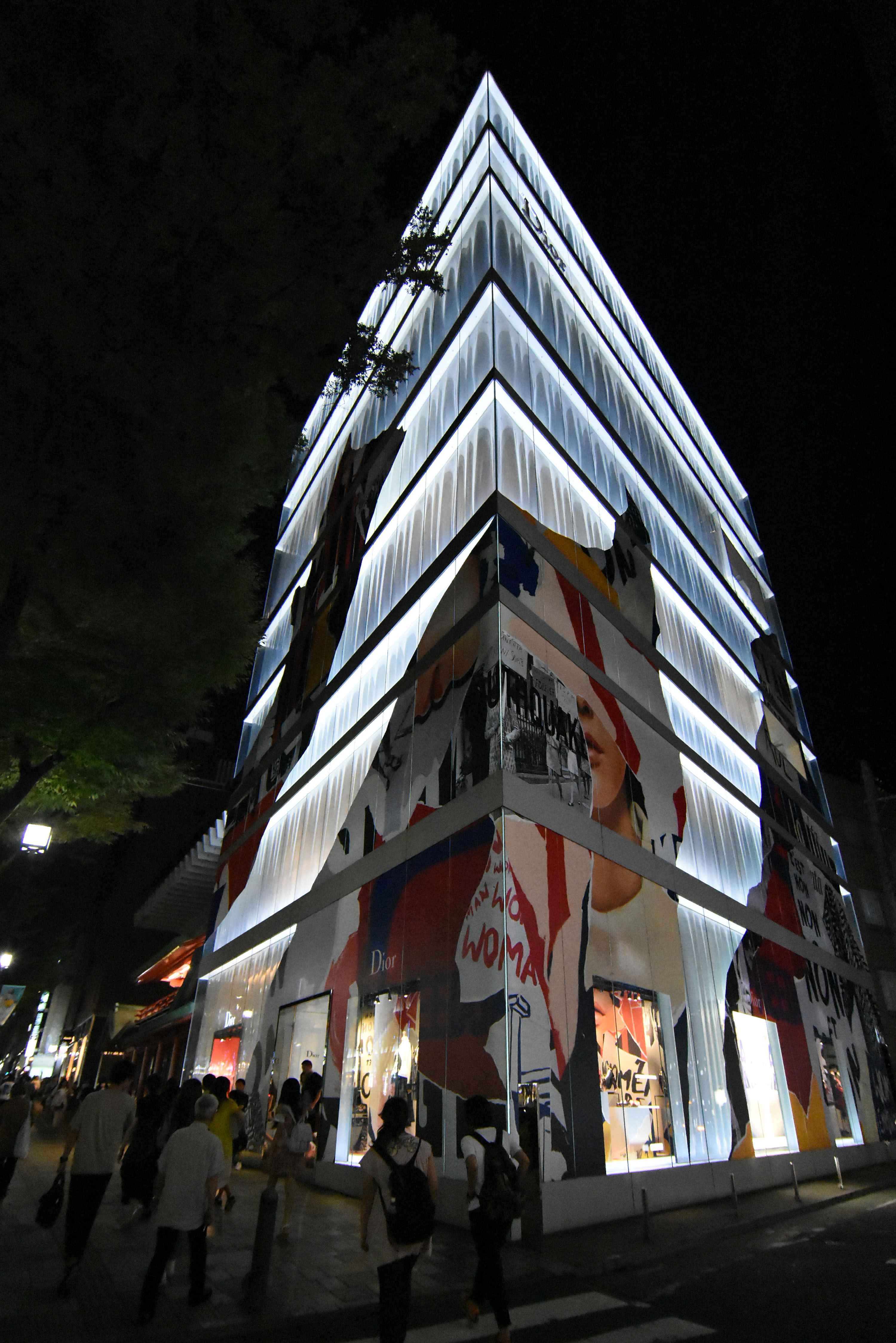
The visual effect of light flowing down like droplets received positive feedback
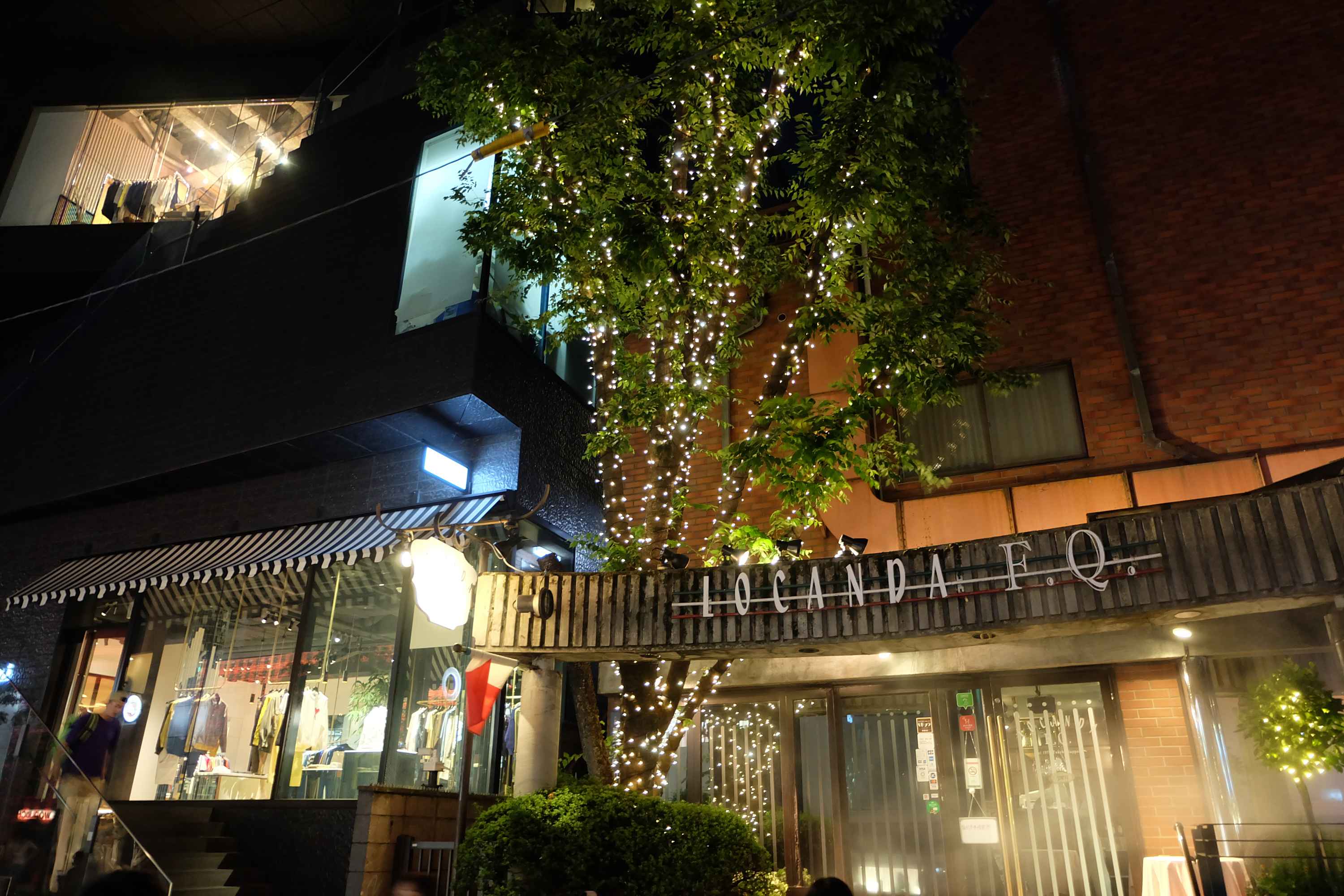
The modest and elegant tree illumination was chosen as a hero
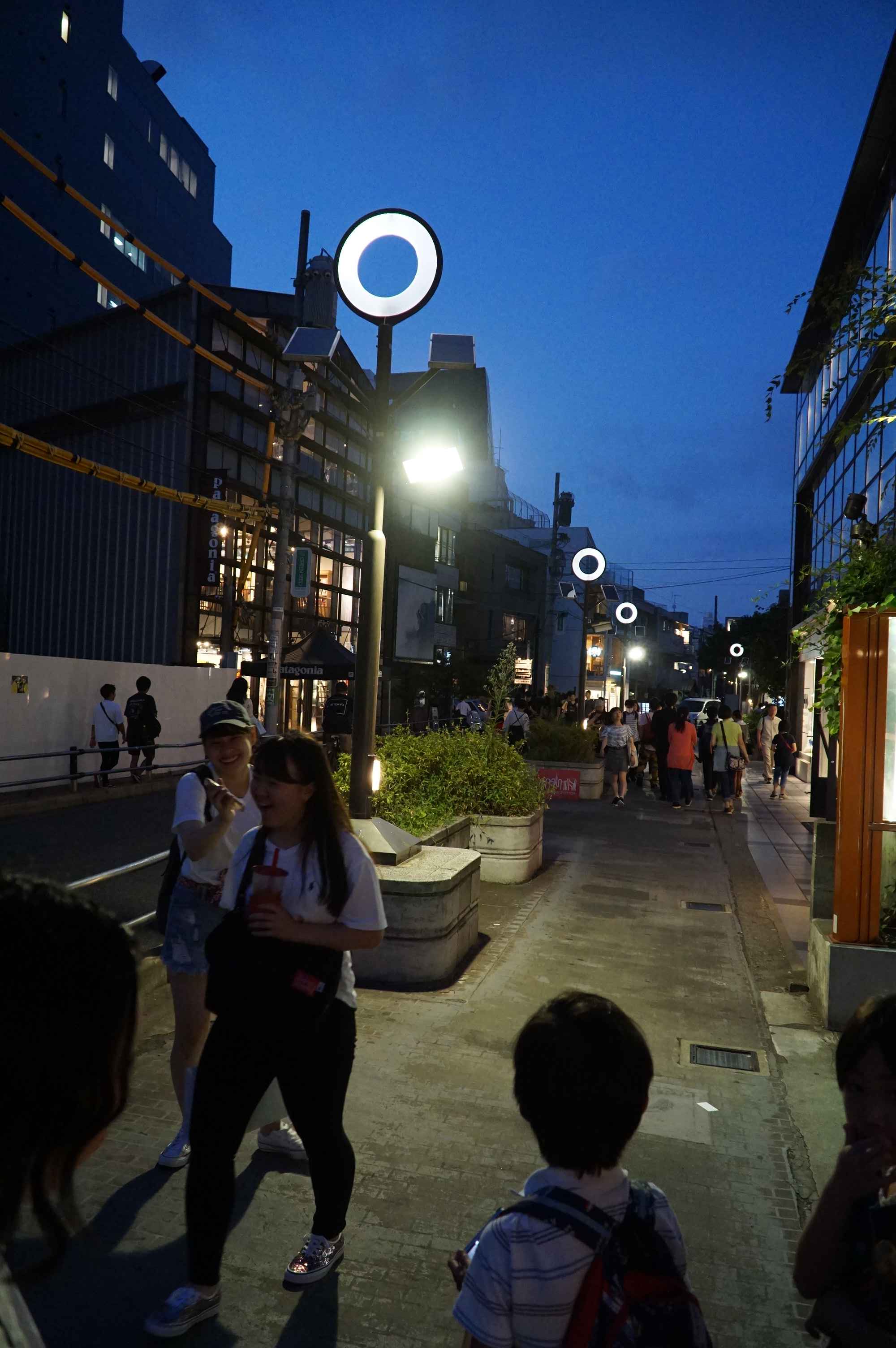
It was chosen as a villain because the soft light from above was ruined by the intense glare from below
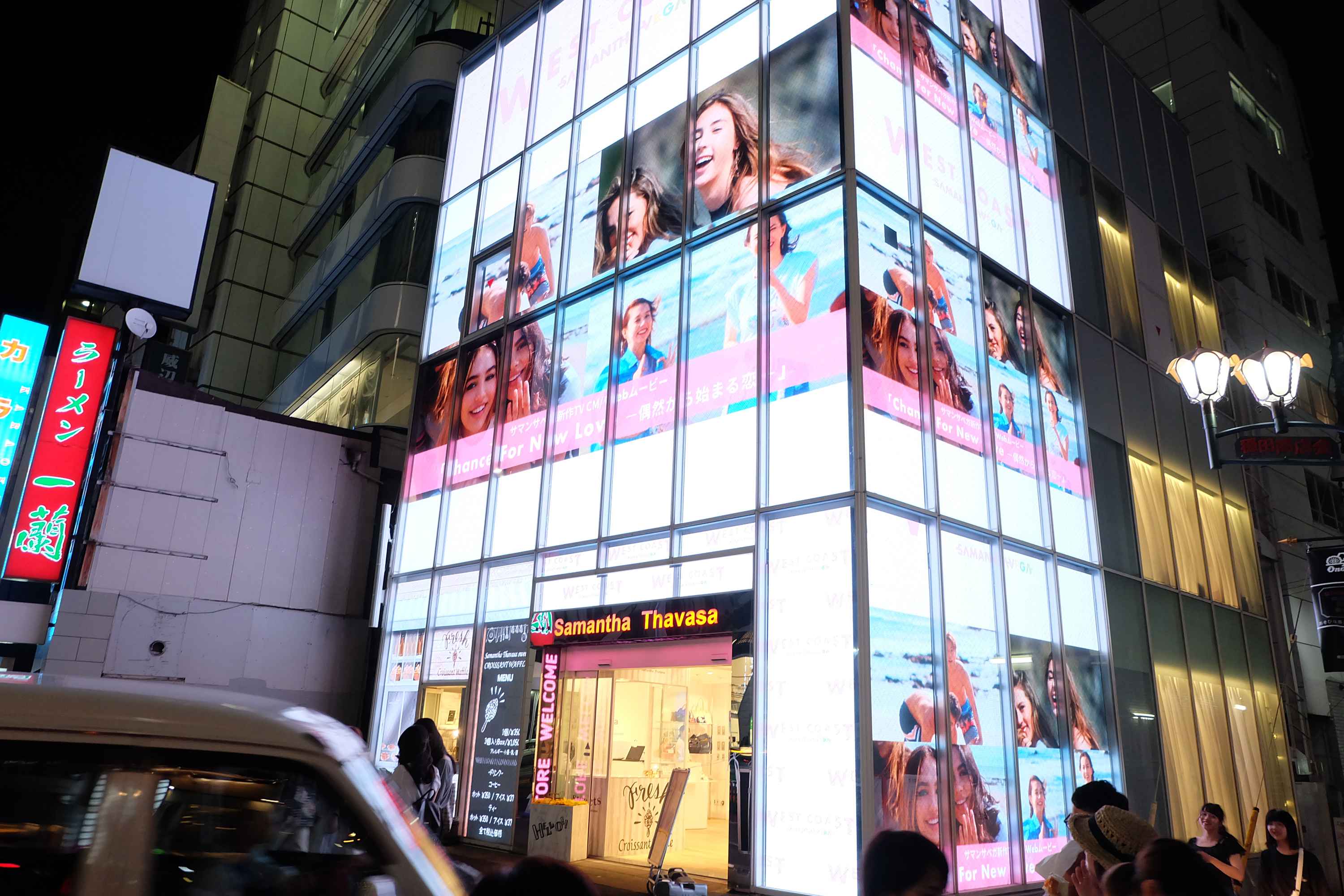
The entire building facade is glowing and is so dazzling that it was chosen as a villain
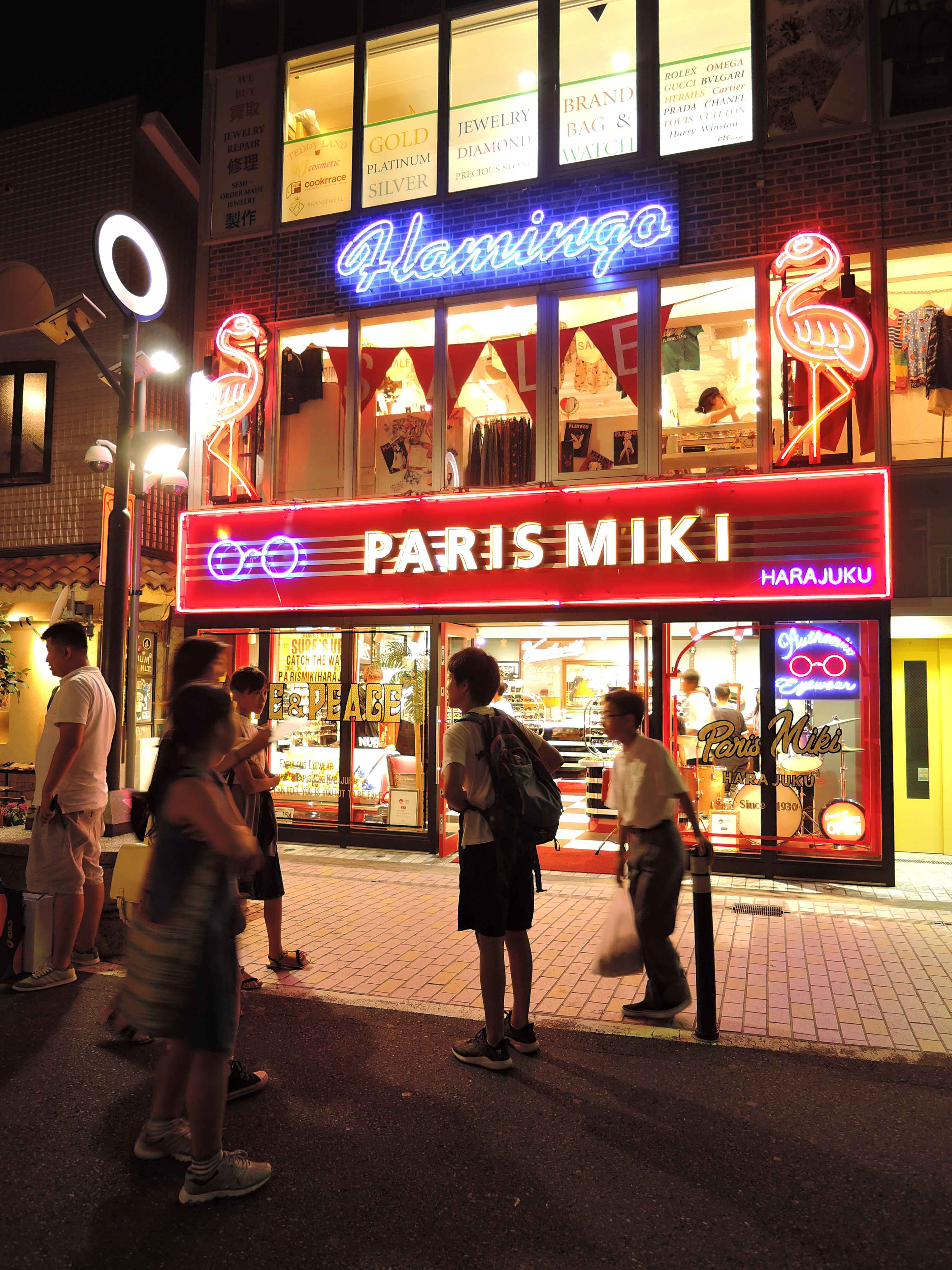
Neon signs that divided opinions between hero and villain
① Team A
Team A consisted entirely of children from the lower elementary grades. Opinions like pure “like” or “dislike” flew around for everything they saw. The children’s method of observation was to rush straight to anything that caught their interest, observing it intently and sometimes touching it while giving their opinions.
The top hero chosen by Team A was a café sign that changed colors. While there were other colored lights, this one was designed so that the wall behind the sign was illuminated and the cutout letters were translucent. Comments included, “It’s fun because it changes colors,” and “It’s stylish.” Other heroes were chosen based on the mature opinion that things like white, surface-emitting signs and gaslight-style streetlights were “easy on the eyes.” Most of the items chosen as villains were direct light sources. Signs with many exposed light bulbs, let alone glaring spotlights, were immediately dismissed as “disliked” by the children.
What I realized while walking with the children was this: adults, based on experience, predict glare and turn away, but children approach to observe and voice their opinions based on what they feel in the moment. I was humbled to realize that as an adult, I have become accustomed to ignoring the lighting villains that flood the city.(Hikaru Kimura)
②Team B
Team B’s Night Walk Survey centered around the keywords “sparkly and dazzling.” The top hero chosen was the tree illumination at a restaurant entrance. Although it was illumination, it was not flashy. Its warm-white color and small lights gave it an elegant impression, and it was unanimously chosen as a hero for matching the street’s aesthetic.
Sign lighting that used indirect lighting was also highly rated, and the opinion that calm lighting suits Cat Street was often heard. However, there was one item that sharply divided opinions: a shop’s facade lighting adorned with colorful neon tubes. It was certainly not calm lighting, using many vibrant colors like red and pink. The conflicting opinions—some liked the lively light, while others felt it did not suit Cat Street—resulted in a deadlock, and we ran out of time before a decision could be made. Red lights used in road studs and sign lighting were chosen as a villain by many who found them to be eerie and frightening. (Yuri Araki)
③Team C
Team C consisted entirely of junior high students, making them the oldest group. They were notably calm while the other teams were rowdy—a demeanor expected of junior high students. The first place they stopped was a pole light with a donut-shaped light guide panel on top, and a glaring light fixture underneath that illuminated the road. The children commented that the glaring light below was ruining the effect of the donut-shaped light above. They also offered the sharp opinion that the lower light didn’t need to be so bright because the surrounding shops already provided ample light.
As they continued, an architecture by Tadao Ando caught their attention. The stylish look of the black exterior combined with the white glowing “GALAXY” text and blue light lines was popular with the children. The Dior Omotesando building was highly praised for its beautiful facade, which looked like dripping light droplets, making it the top hero. Since many of the members came from the Ito Juku school, many of the children were interested in architecture and light as a set. All the lights chosen as heroes were those that harmonized with the architecture. Conversely, sign lighting and interior lighting that were too assertive with their light were named as villains. (Shosaku Takahashi)
④Team D
In Team D, everyone actively gave many opinions on a single light fixture. Led by the older children, they discussed many types of lighting by comparing them, including not only the lights of shops and streetlights on the path they were walking, but also lights in less noticeable places, such as a room inside a building or the staircase lighting of a very distant building. While there was consensus that glaringly bright lighting was a villain, opinions often differed between the girls and boys, and their disagreements remained even after discussion. (Aiko Kanda)
⑤Team E
Team E was the youngest group, and they were lively, energetic, and active throughout the entire walk. The younger the children were, the more they clearly stated their opinions and showed great curiosity about different kinds of light. Perhaps because of their young age, as soon as they finished voicing their opinion, their interest shifted to the next place, sometimes leaving a child behind. They were so eager to participate that the adults had to struggle just to keep up!
Initially, they couldn’t find many heroes. However, after a little advice from the adults—suggesting that
lights designed to attract customers or lights they found beautiful could be considered “heroes”— the children understood and named several. Despite their young age, sharp opinions were voiced, such as, “The crucial shop name isn’t lit, so it’s not fulfilling its role as a sign.” (Leon Hitsu)
■Poster Creation and Presentation
After returning from the Night Walk Survey, it was time to create summary posters. Each team ranked the heroes and villains they had found. None of the teams reached a decision quickly; the creation process took longer than expected. In some teams, discussions broke down, and the boys and girls even ended up creating separate rankings. It was interesting that many teams cited the same heroes and villains, despite having taken separate routes during the survey.
■Reflections
The Lighting Detectives Jr. Night Walk Survey always brings new discoveries, but this time, we were surprised by the sheer number of opinions. Contrary to our initial concern that the children might be too shy to share their views, we had the delightful problem of having too many opinions to compile them easily.
The posters created by the teams have been uploaded to the Lighting Detectives website, so please be sure to check them out. (Noriko Higashi)
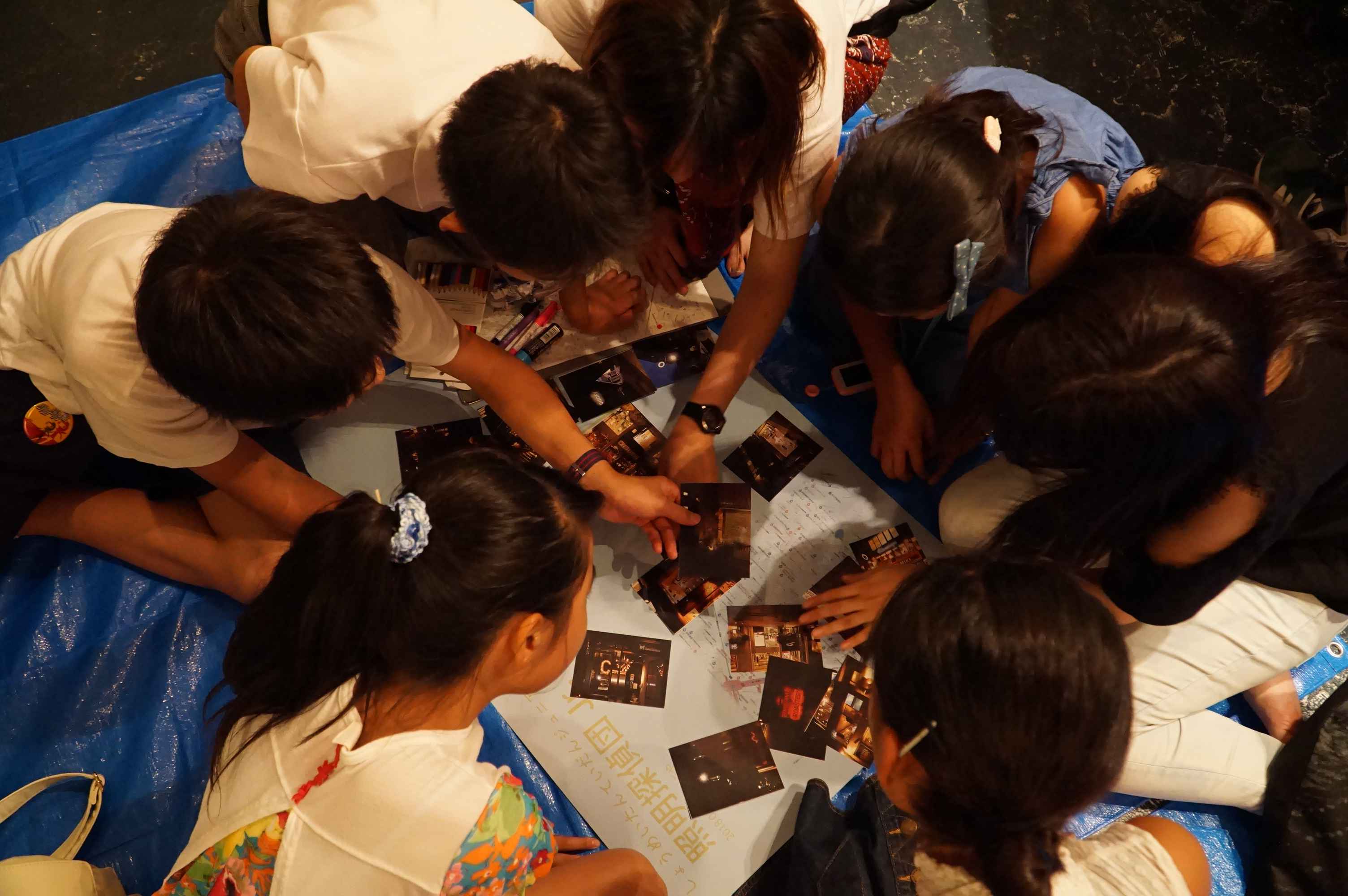
Divided into teams to create the posters
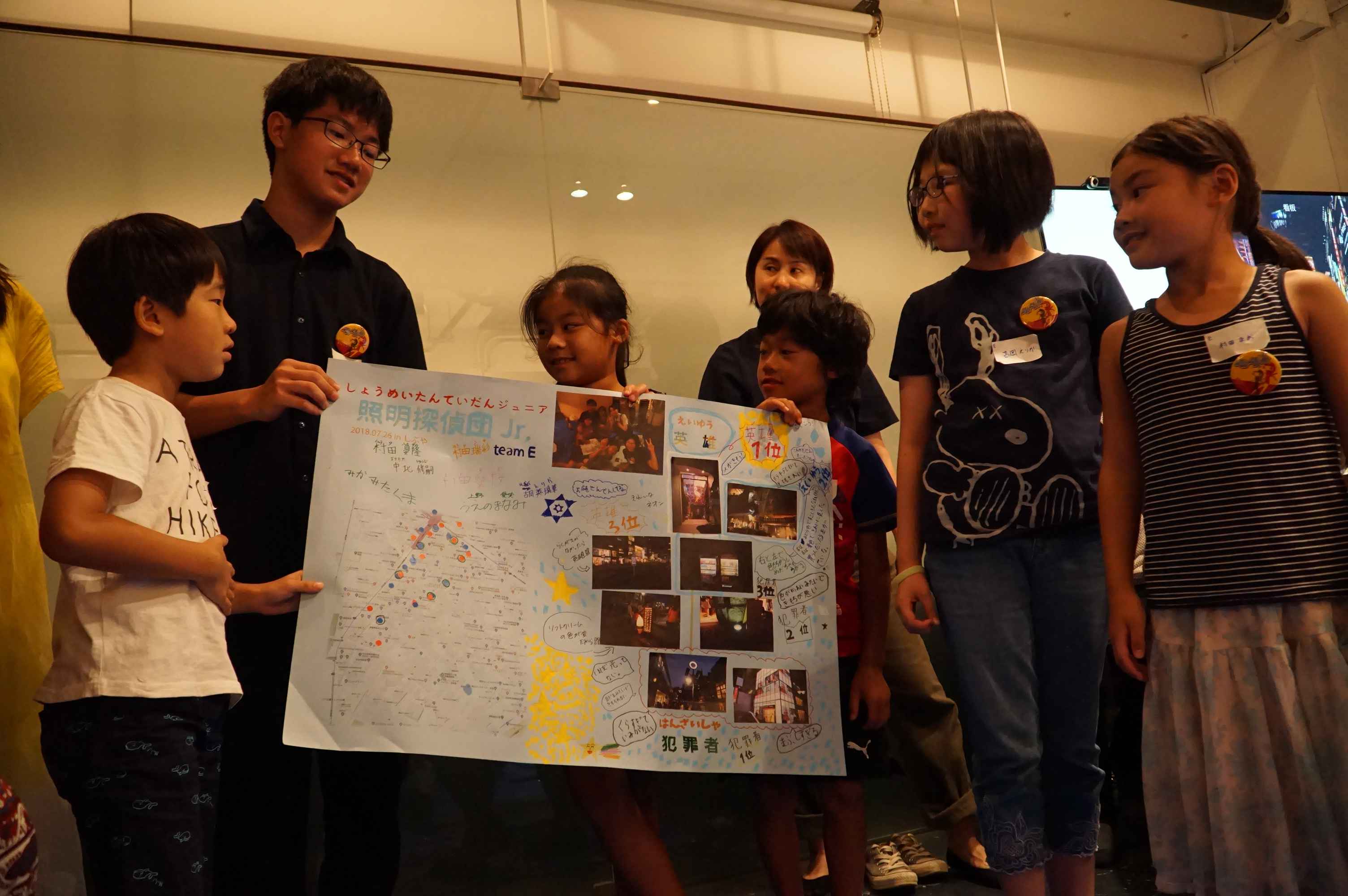
A presentation summarizing the Night Walk Survey using the posters they created
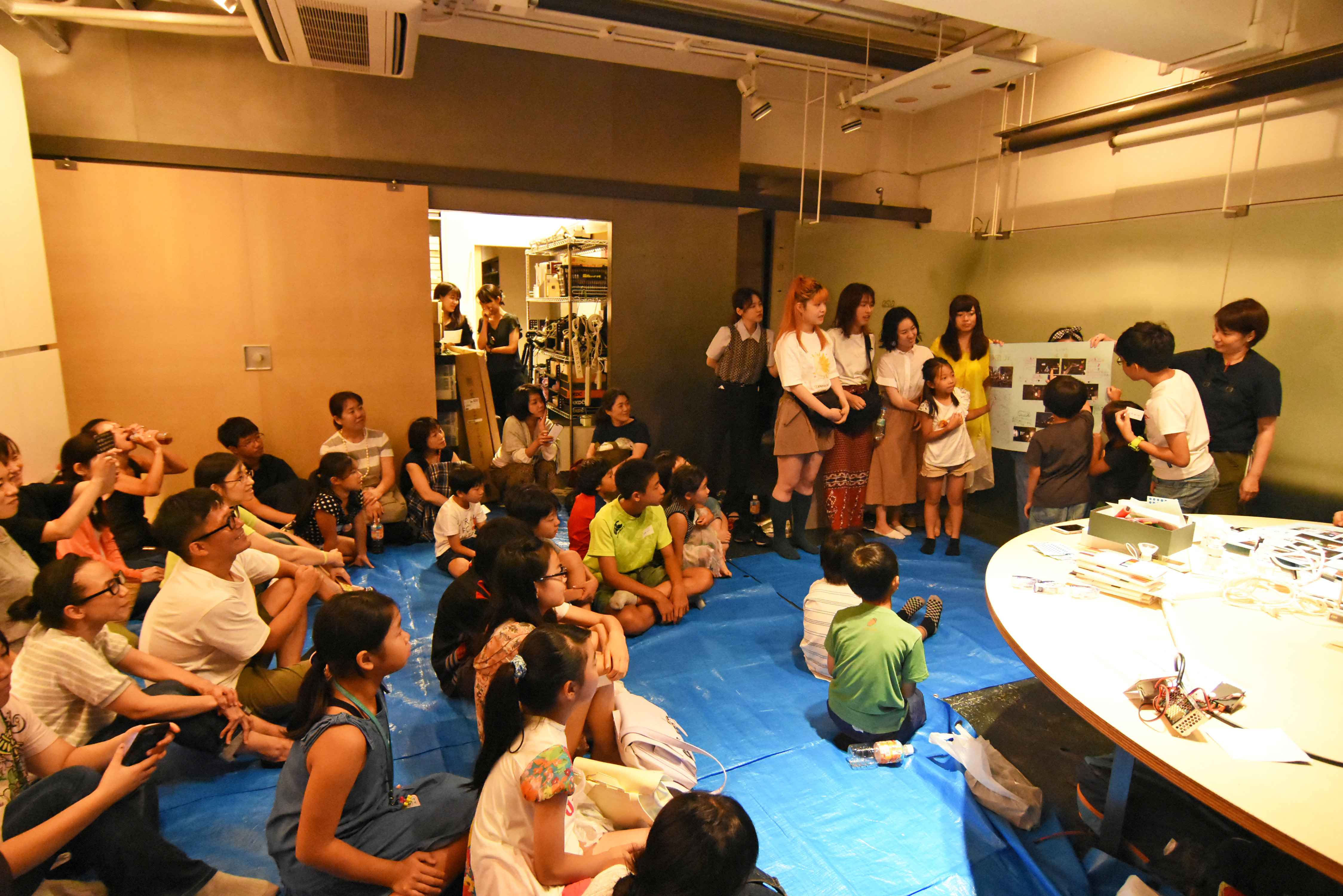
The children paying attention to the opinions of the other groups





